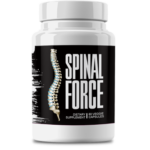This Village-Made Chinese Pain Reliever Eliminates Back And Joint Pain!
Revolutionary Methods: Best Treatment for Knee Pain Today

Introduction to Knee Pain and Its Impact
Understanding Knee Pain: Knee pain is a common ailment that affects people of all ages. It can result from an injury, such as a ruptured ligament or torn cartilage, or from medical conditions like arthritis, gout, and infections. Knee pain can significantly impact daily activities, limiting mobility and reducing the quality of life.
Prevalence and Causes of Knee Pain: Studies show that knee pain affects millions worldwide, with prevalence increasing with age. The causes range from acute injuries and overuse to chronic conditions like osteoarthritis. Understanding the underlying cause is crucial for effective treatment.
Importance of Early Treatment: Addressing knee pain early can prevent further complications and improve outcomes. Delaying treatment may lead to worsening conditions, increased pain, and more invasive procedures down the line. Early intervention can help maintain knee function and overall well-being.
Traditional Methods for Knee Pain Relief
Over-the-Counter Medications: Non-prescription medications like ibuprofen and acetaminophen are commonly used to manage knee pain. These medications can help reduce inflammation and alleviate discomfort. However, they are typically recommended for short-term use due to potential side effects.
Physical Therapy: Physical therapy is a cornerstone in treating knee pain. Tailored exercise programs can strengthen the muscles around the knee, enhance flexibility, and improve overall joint function. Physical therapists also teach patients how to modify activities to prevent further injury.
Common Surgical Options: In cases where conservative treatments fail, surgery might be necessary. Common surgical options include arthroscopy, where a camera and instruments are inserted through small incisions to repair damaged tissues, and partial or total knee replacement for severe arthritis.
Cutting-Edge Non-Surgical Treatments for Knee Pain
Platelet-Rich Plasma (PRP) Therapy: PRP therapy involves injecting a concentration of a patient’s own platelets to accelerate the healing of injured tendons, ligaments, muscles, and joints. This innovative treatment has shown promise in reducing pain and improving knee function.
Stem Cell Therapy: Stem cell therapy uses the body’s own regenerative cells to promote healing in damaged tissues. By injecting stem cells into the knee, this treatment aims to reduce inflammation and repair tissue, offering an alternative to more invasive procedures.
Radiofrequency Ablation: This technique uses radio waves to generate heat and disrupt nerve signals sending pain messages to the brain. Radiofrequency ablation can provide long-lasting relief for chronic knee pain, particularly in patients who have not responded to other treatments.
Advanced Surgical Techniques
Minimally Invasive Surgery: Minimally invasive surgery involves smaller incisions and less tissue damage than traditional surgery. Techniques like arthroscopy and mini-incision total knee replacement can reduce recovery times and improve surgical outcomes.
Arthroscopic Procedures: Arthroscopy is a minimally invasive procedure using a small camera to diagnose and treat problems inside the knee joint. This technique is commonly used for repairing meniscus tears, removing loose fragments, and addressing cartilage damage.
Robotic-Assisted Knee Replacement: Robotic-assisted knee replacement allows for greater precision during surgery. Surgeons use a robotic arm to ensure the accurate placement of implants, which can lead to better alignment, improved function, and increased longevity of the knee replacement.
Innovative Pain Management Solutions
Cryotherapy: Cryotherapy involves the use of extreme cold to reduce inflammation and numb pain. This treatment can be applied locally to the knee or through whole-body cryotherapy sessions. Cryotherapy has been found to provide temporary relief and aid in recovery.
Ultrasound-Guided Injections: Ultrasound guidance improves the accuracy of injections, ensuring that medications, such as corticosteroids or hyaluronic acid, are delivered precisely to the affected area. This method can enhance pain relief and improve joint function.
Acupuncture and Alternative Therapies: Acupuncture, an ancient Chinese medicine practice, involves inserting thin needles into specific points on the body to relieve pain and promote healing. Other alternative therapies, such as chiropractic care and herbal supplements, may also offer benefits for knee pain management.
Lifestyle Modifications and Preventive Measures
Importance of Weight Management: Maintaining a healthy weight is crucial for reducing knee pain, as excess weight puts additional stress on the joints. Weight loss can significantly decrease pain and improve function in overweight individuals with knee pain.
Exercise and Strengthening Programs: Regular exercise, including low-impact activities like swimming and cycling, can help strengthen the muscles around the knee and support joint health. Tailored strengthening programs can enhance stability and prevent further injury.
Ergonomic Adjustments in Daily Activities: Making ergonomic adjustments in daily activities can help reduce strain on the knees. This includes using supportive footwear, modifying workspaces, and incorporating knee-friendly techniques when lifting or performing repetitive tasks.
Patient Success Stories
Testimonials from PRP Therapy Recipients: Many patients have found significant relief from knee pain through PRP therapy. Testimonials highlight improvements in pain levels, increased mobility, and a return to activities they once enjoyed. PRP therapy has been particularly beneficial for those with chronic conditions.
Experiences with Minimally Invasive Surgery: Patients who have undergone minimally invasive surgery often report shorter recovery times and less postoperative pain. Success stories emphasize the advantages of smaller incisions and quicker returns to daily activities.
Long-term Outcomes of Lifestyle Changes: Success stories from individuals who have adopted lifestyle changes, such as weight loss and exercise, demonstrate the lasting impact of these modifications. Patients often experience sustained pain relief and improved knee function over the long term.
Future Trends in Knee Pain Treatment
Emerging Technologies in Pain Management: The future of knee pain treatment looks promising with the development of new technologies. Advances in imaging, such as 3D MRI and augmented reality, are expected to improve diagnosis and treatment planning.
Potential of Gene Therapy: Gene therapy holds the potential to treat knee pain by targeting the underlying genetic factors contributing to conditions like osteoarthritis. Research is ongoing to develop therapies that can modify or repair damaged genes to alleviate pain and promote healing.
Personalized Medicine Approaches: Personalized medicine tailors treatment plans based on an individual’s unique genetic makeup, lifestyle, and environmental factors. This approach aims to provide more effective and targeted treatments for knee pain, improving patient outcomes and satisfaction.








